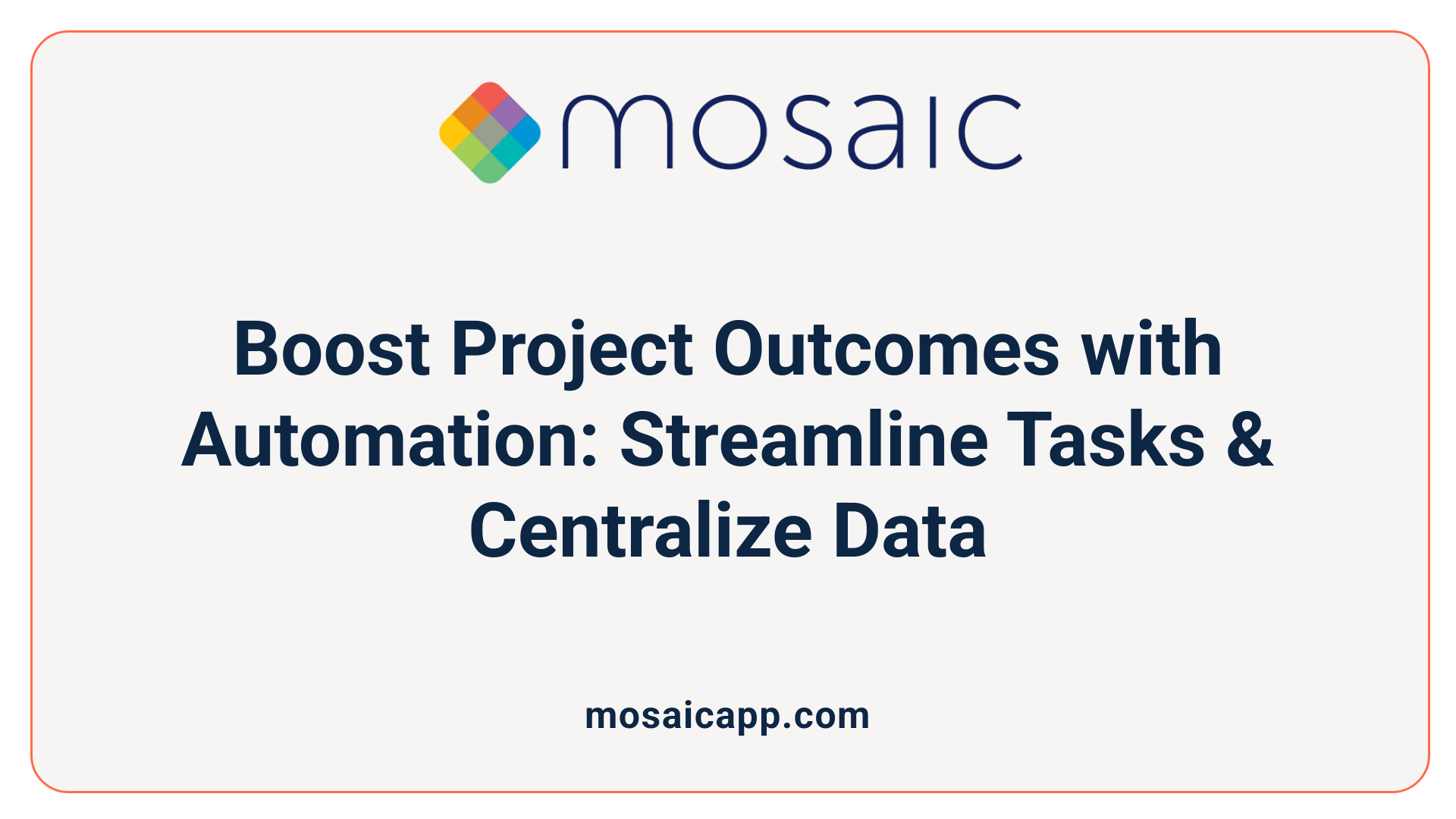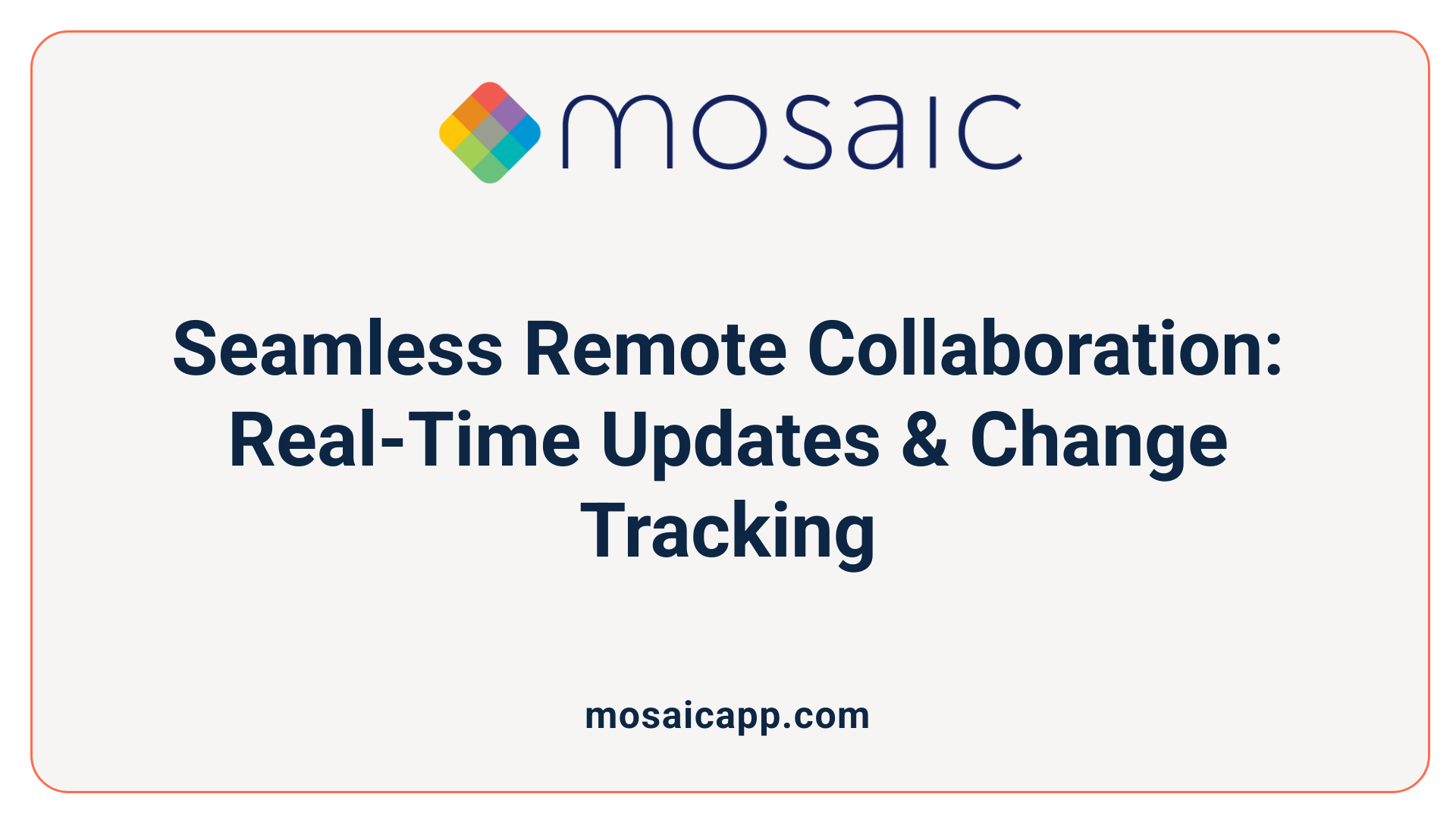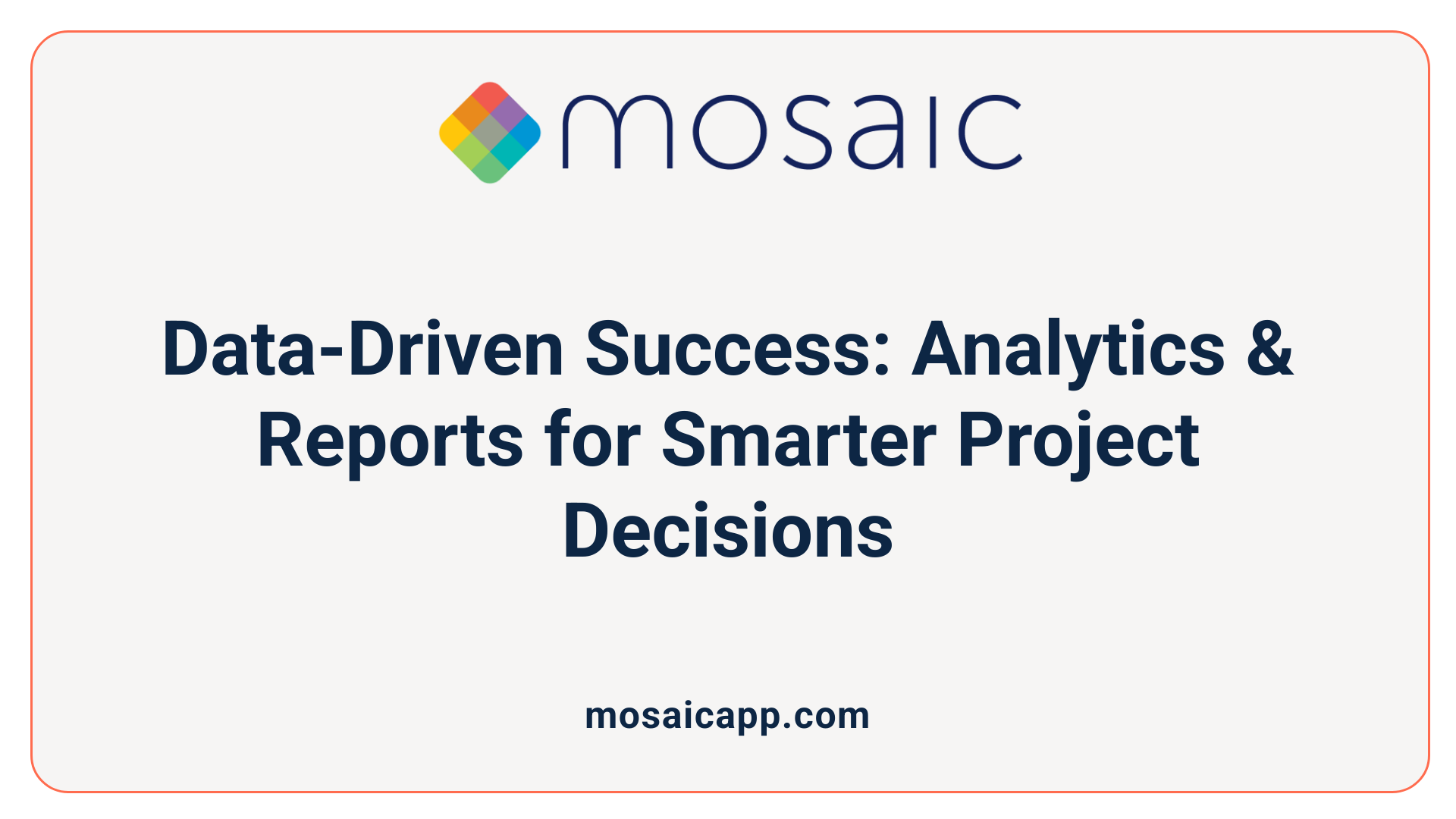Why Resource Planning Software Matters Today
In today’s fast-paced project environments, efficient resource management isn’t a luxury — it’s a necessity. Mosaic Resource Planning stands out by delivering measurable return on investment in the first year, reshaping how organizations plan, allocate, and optimize their resources. This article explores the core advantages of Mosaic’s approach, its impact on project outcomes, and strategies to maximize benefits from the start.
Enhancing Efficiency and Productivity Through Automation

How Does Automation Improve Project Management?
Automation in project management software streamlines routine tasks such as scheduling, task assignments, and progress updates. By automating these processes, teams spend less time on administrative work and more time on strategic activities.
What Role Does Centralized Data Management Play?
Centralized data management means all project information is stored in one location accessible to all team members. This reduces confusion, minimizes duplication of work, and allows instant access to the latest data and documents, improving coordination and decision-making.
How Does Automation Reduce Manual Effort and Errors?
Manual entry and tracking increase the risk of mistakes and consume valuable time. Automated reminders, status tracking, and data synchronization ensure accuracy and timely updates, thereby reducing human error and freeing up resources.
What Is the Overall Impact on Productivity?
Together, automation and centralized data management boost productivity by simplifying workflows, accelerating communication, and ensuring that project details are accurate and current. Teams can complete tasks faster, meet deadlines reliably, and improve overall project outcomes.
Driving Collaboration and Communication in Distributed Teams

How Does a Centralized Platform Facilitate Real-Time Updates?
Project management software acts as a centralized platform where team members can access the most current information anytime. This real-time accessibility ensures that everyone stays on the same page, reducing the risk of miscommunication or duplicated efforts.
What Role Does Tracking Changes Play?
Tracking changes allows teams to monitor updates and modifications to project elements as they happen. This transparency helps in quickly identifying issues or deviations from the plan, enabling swift corrective actions to keep projects on schedule.
Why Are These Features Important for Remote Teams?
For distributed or remote teams, working from multiple locations can cause communication delays and misunderstanding. A centralized system providing real-time updates and change tracking bridges this gap, ensuring smooth coordination despite physical distances.
How Does Project Management Software Improve Team Collaboration?
With features like shared dashboards, messaging tools, and collaborative document editing, project management platforms enhance engagement and teamwork. These tools encourage seamless information flow and help build a cohesive work environment for remote teams.
These aspects collectively promote efficient communication, reduce errors, and foster collaboration, making project management software indispensable for successful remote teamwork.
Strategic Resource Allocation for Bottleneck Prevention

What Are Resource Allocation Techniques?
Resource allocation techniques are methods used to assign available resources, like staff and budget, efficiently across various project tasks. The goal is to optimize productivity while ensuring that no team member or resource is overburdened.
How Does Resource Leveling Work?
Resource leveling is a technique that adjusts project schedules to resolve conflicts caused by resource over-allocation. It delays certain tasks while keeping the overall project timeline intact, helping to balance workloads and reduce stress on teams.
What Is Resource Smoothing?
Resource smoothing fine-tunes the project schedule to ensure that resource usage stays within limits without extending the project duration. It redistributes tasks where possible, preventing spikes in demand for particular resources.
Why Is Managing Workloads Important?
Managing workloads effectively ensures that team members aren’t overwhelmed, which boosts productivity and morale. Balanced workloads prevent burnout and help maintain consistent progress throughout the project.
How Can Bottlenecks Be Prevented?
Bottlenecks occur when a resource becomes a constraint, slowing down the entire project. Applying resource allocation, leveling, and smoothing techniques helps identify potential overloads early, allowing managers to reassign tasks or adjust timelines to keep workflows smooth.
By combining these strategic resource allocation methods, organizations can avoid project delays, improve efficiency, and maintain healthy team dynamics, ultimately leading to more successful project outcomes.
Leveraging Analytics for Better Decision-Making and Risk Management

How Do Analytics and Progress Reports Enhance Decision-Making?
Project management software integrates powerful analytics and progress reporting tools that provide detailed insights into how projects are advancing. These reports offer real-time visibility of milestones, completed tasks, and pending activities, enabling managers to quickly understand the current project status. With this comprehensive overview, decision-makers can allocate resources more effectively and adjust priorities to keep projects on track.
What Role Do Performance Metrics Play in Project Success?
Performance metrics quantify various aspects of a project's progress, such as time used, budget spent, and task completion rates. These metrics help identify trends and measure productivity, offering a factual basis for evaluating the efficiency of teams and processes. By monitoring these indicators regularly, organizations can detect deviations early and implement corrective actions before issues escalate.
How Is Early Risk Identification Achieved?
Utilizing analytics tools, project management platforms can highlight potential risks by analyzing patterns and anomalies in project data. Early warning signs, such as resource bottlenecks or delayed deliverables, become visible through these insights. This proactive risk management enables teams to anticipate challenges and minimize their impact on project timelines and budgets.
Why Is Data-Driven Decision-Making Critical?
Data-driven decisions rely on objective analysis instead of intuition alone. The availability of accurate analytics and performance metrics empowers project leaders to make informed choices that optimize outcomes. Combining historical data with current progress reports allows organizations to refine strategies continuously, enhancing their ability to deliver projects successfully within scope, time, and cost constraints.
Financial Impact: Increasing Profitability and ROI Within Year One
How Do You Calculate ROI for Resource Planning?
Return on investment (ROI) for resource planning software is calculated using a straightforward formula: (total value of investment - total cost of investment) divided by total cost of investment, then multiplied by 100%. This formula helps organizations quantify the financial benefits gained from implementing such systems within the first year.
How Does Time Savings Contribute to Profitability?
Resource and project management software automate routine tasks, significantly reducing manual effort. By saving time on scheduling, allocation, and tracking, teams focus more on productive work rather than administrative duties. This time saved translates directly into cost efficiencies and faster project delivery.
In What Ways Does Reducing Errors Affect ROI?
Reducing errors through centralized data management and automated workflows minimizes costly mistakes. It prevents budget overruns and timing delays, ensuring projects stay on track. Less rework is needed, which cuts down on wasted resources and increases profitability.
Why Is Budget Management Crucial to Increasing Revenue?
Effective budget management features embedded in resource planning tools monitor expenses in real time, helping managers make informed decisions. Staying within budget avoids overspending, which directly preserves profit margins and allows reinvestment in other growth areas.
How Does Software Usage Lead to Increased Market Advantage?
When projects consistently meet deadlines and budget targets through efficient resource use, organizations can deliver higher quality work. This boosts customer satisfaction and reputation, leading to repeat business and new opportunities that increase revenue and strengthen market position.
By integrating resource planning software, companies can expect substantial financial benefits fast, driven by reduced errors, optimized budgets, and saved time. These factors work together to generate a strong ROI and enhance competitive advantage within the first year of adoption.
Key Features That Empower Project and Resource Management

What are the essential features of resource management software?
Resource management software comes packed with several features designed to streamline project and resource management. One foundational capability is resource planning, which helps organizations schedule and monitor resources such as personnel, time, and budgets to keep projects on track.
How does allocation and scheduling work in resource management?
Resource allocation and scheduling are critical in balancing workloads and preventing bottlenecks. Effective allocation assigns the right people and resources to the appropriate tasks, while scheduling ensures these resources are used efficiently throughout the project timeline. Techniques like resource leveling and resource smoothing support this process by adjusting workloads to avoid conflict or overuse.
Why are time and budget management crucial in these tools?
Managing time and budgets is vital for project success. The software tracks time spent on tasks and keeps budgets in check, enabling teams to meet deadlines and control costs. This oversight not only enhances productivity but also supports higher quality outcomes and increased customer satisfaction.
What role do collaboration tools play?
Collaboration tools within the software provide a centralized platform for team communication. This allows real-time updates and seamless tracking of changes, which is especially beneficial for remote teams. Improved collaboration leads to better coordination and more efficient project delivery.
How do automation integrations enhance project management?
Automation integrations reduce manual effort by automating recurring tasks and workflows. This minimizes errors, saves time, and allows team members to focus on strategic activities. Together with centralized data management, automation elevates both efficiency and project quality.
| Feature | Description | Benefit |
|---|---|---|
| Resource Planning | Scheduling and monitoring resources (people, time, budget) | Ensures projects stay on track |
| Allocation & Scheduling | Assigning resources and balancing workloads | Prevents bottlenecks |
| Time & Budget Management | Tracking time and expenses | Increases efficiency & saves costs |
| Collaboration Tools | Centralized communication platform for teams | Enhances communication and coordination |
| Automation Integrations | Automates routine tasks and workflows | Reduces errors and boosts productivity |
Best Practices for Maximizing the ROI of Resource Planning Software
How Can Employee Training Enhance ROI?
Proper employee training is essential to fully leverage resource planning software. When users understand how to effectively use the software’s tools for resource allocation, scheduling, and analytics, organizations experience smoother workflows and fewer errors. Training reduces resistance to new technologies and maximizes adoption, leading to improved productivity and increased ROI.
Why is Executive Buy-In Crucial?
Gaining executive buy-in ensures that resource management initiatives receive necessary support and funding. Executives can champion the software’s benefits, facilitate organizational change, and help overcome implementation challenges. Their involvement encourages alignment with business goals, driving better decision-making and efficient resource use.
What Role Does Continuous Evaluation Play?
Continuous evaluation of the software’s performance helps identify areas for improvement and ensures it continues to meet organizational needs. Regular assessment allows for timely adjustments, optimizing workflows and maintaining high efficiency. This ongoing process safeguards the long-term success of the resource planning investment.
How Should KPIs Be Measured?
Accurate measurement of key performance indicators (KPIs) like project completion rates, resource utilization, cost savings, and timeline adherence is vital. Tracking these metrics provides insight into software impact and highlights opportunities to enhance processes. This data-driven approach helps quantify ROI and demonstrate value to stakeholders.
How Can Implementation Pitfalls Be Avoided?
Common pitfalls—such as insufficient training, lack of clear objectives, and poor communication—can hinder ROI. Avoiding these requires careful planning, setting realistic goals, and fostering collaboration across teams. Addressing challenges proactively ensures a smoother implementation and maximizes software benefits.
Together, these strategies empower organizations to fully capitalize on resource planning software, driving efficiency, reducing costs, and enhancing overall project success.
Sustaining Gains Beyond Year One
Mosaic Resource Planning offers organizations the tools and strategies to achieve true ROI quickly, largely by automating workflows, enhancing collaboration, and leveraging robust analytics for smarter decisions. By adopting effective implementation techniques including thorough training, leadership support, and diligent performance monitoring, businesses can establish a foundation for continued efficiency, profitability, and competitive advantage beyond the inaugural year. Resource planning is no longer a back-office function; it is a strategic driver of project success and lasting value.


